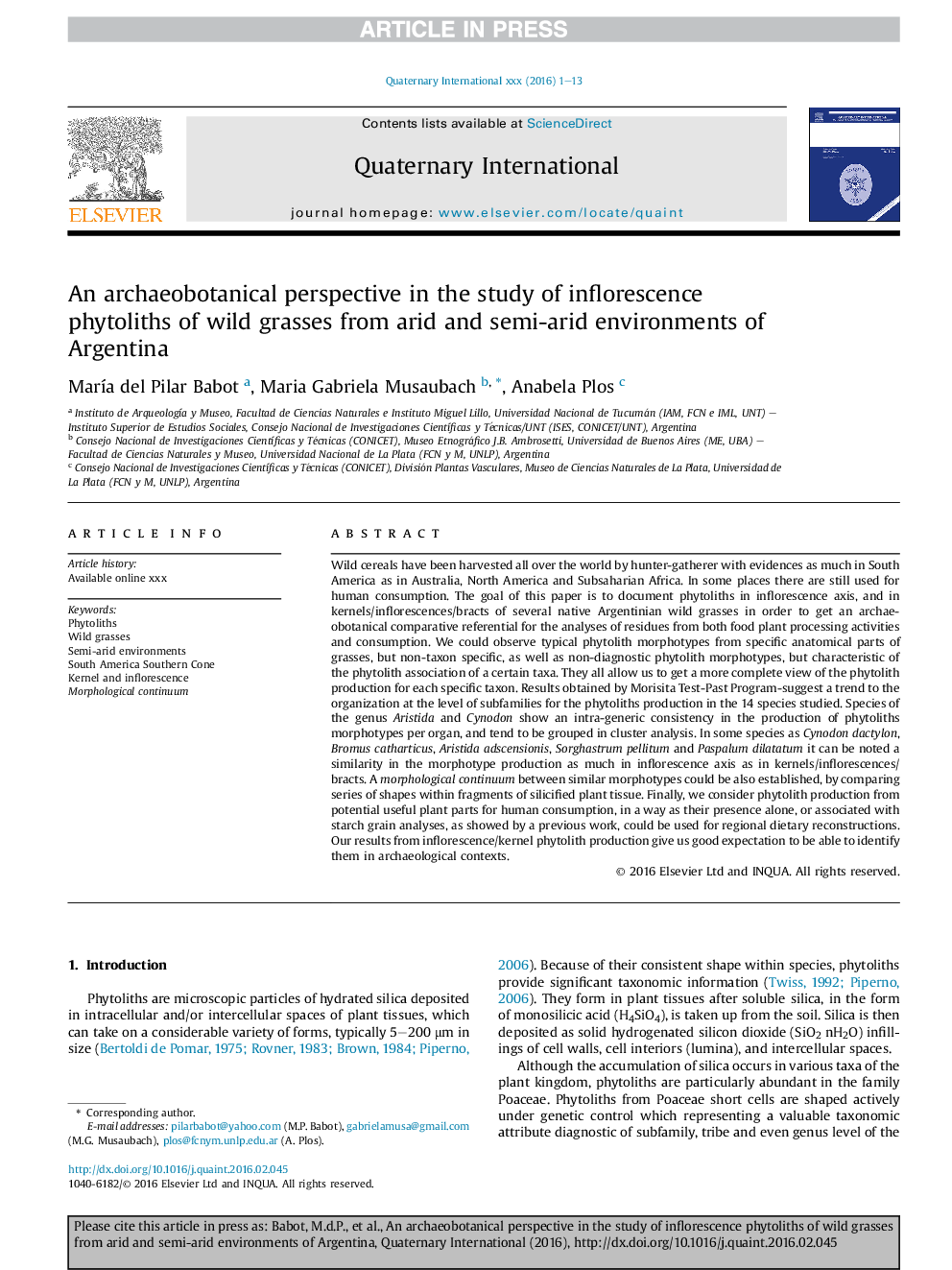| کد مقاله | کد نشریه | سال انتشار | مقاله انگلیسی | نسخه تمام متن |
|---|---|---|---|---|
| 5113691 | 1377945 | 2017 | 13 صفحه PDF | دانلود رایگان |
عنوان انگلیسی مقاله ISI
An archaeobotanical perspective in the study of inflorescence phytoliths of wild grasses from arid and semi-arid environments of Argentina
ترجمه فارسی عنوان
یک دیدگاه باستان شناسی در مطالعه فیتولیت های گل آذین از گیاهان وحشی از محیط های خشک و نیمه خشک آرژانتین
دانلود مقاله + سفارش ترجمه
دانلود مقاله ISI انگلیسی
رایگان برای ایرانیان
کلمات کلیدی
فیتولیت، گیاهان وحشی، محیط نیمه خشک، آمریکای جنوبی جنوبی مخروط، هسته و گل آذین، پیوستگی مورفولوژیکی،
موضوعات مرتبط
مهندسی و علوم پایه
علوم زمین و سیارات
زمین شناسی
چکیده انگلیسی
Wild cereals have been harvested all over the world by hunter-gatherer with evidences as much in South America as in Australia, North America and Subsaharian Africa. In some places there are still used for human consumption. The goal of this paper is to document phytoliths in inflorescence axis, and in kernels/inflorescences/bracts of several native Argentinian wild grasses in order to get an archaeobotanical comparative referential for the analyses of residues from both food plant processing activities and consumption. We could observe typical phytolith morphotypes from specific anatomical parts of grasses, but non-taxon specific, as well as non-diagnostic phytolith morphotypes, but characteristic of the phytolith association of a certain taxa. They all allow us to get a more complete view of the phytolith production for each specific taxon. Results obtained by Morisita Test-Past Program-suggest a trend to the organization at the level of subfamilies for the phytoliths production in the 14 species studied. Species of the genus Aristida and Cynodon show an intra-generic consistency in the production of phytoliths morphotypes per organ, and tend to be grouped in cluster analysis. In some species as Cynodon dactylon, Bromus catharticus, Aristida adscensionis, Sorghastrum pellitum and Paspalum dilatatum it can be noted a similarity in the morphotype production as much in inflorescence axis as in kernels/inflorescences/bracts. A morphological continuum between similar morphotypes could be also established, by comparing series of shapes within fragments of silicified plant tissue. Finally, we consider phytolith production from potential useful plant parts for human consumption, in a way as their presence alone, or associated with starch grain analyses, as showed by a previous work, could be used for regional dietary reconstructions. Our results from inflorescence/kernel phytolith production give us good expectation to be able to identify them in archaeological contexts.
ناشر
Database: Elsevier - ScienceDirect (ساینس دایرکت)
Journal: Quaternary International - Volume 434, Part B, 1 April 2017, Pages 129-141
Journal: Quaternary International - Volume 434, Part B, 1 April 2017, Pages 129-141
نویسندگان
MarÃa del Pilar Babot, Maria Gabriela Musaubach, Anabela Plos,
